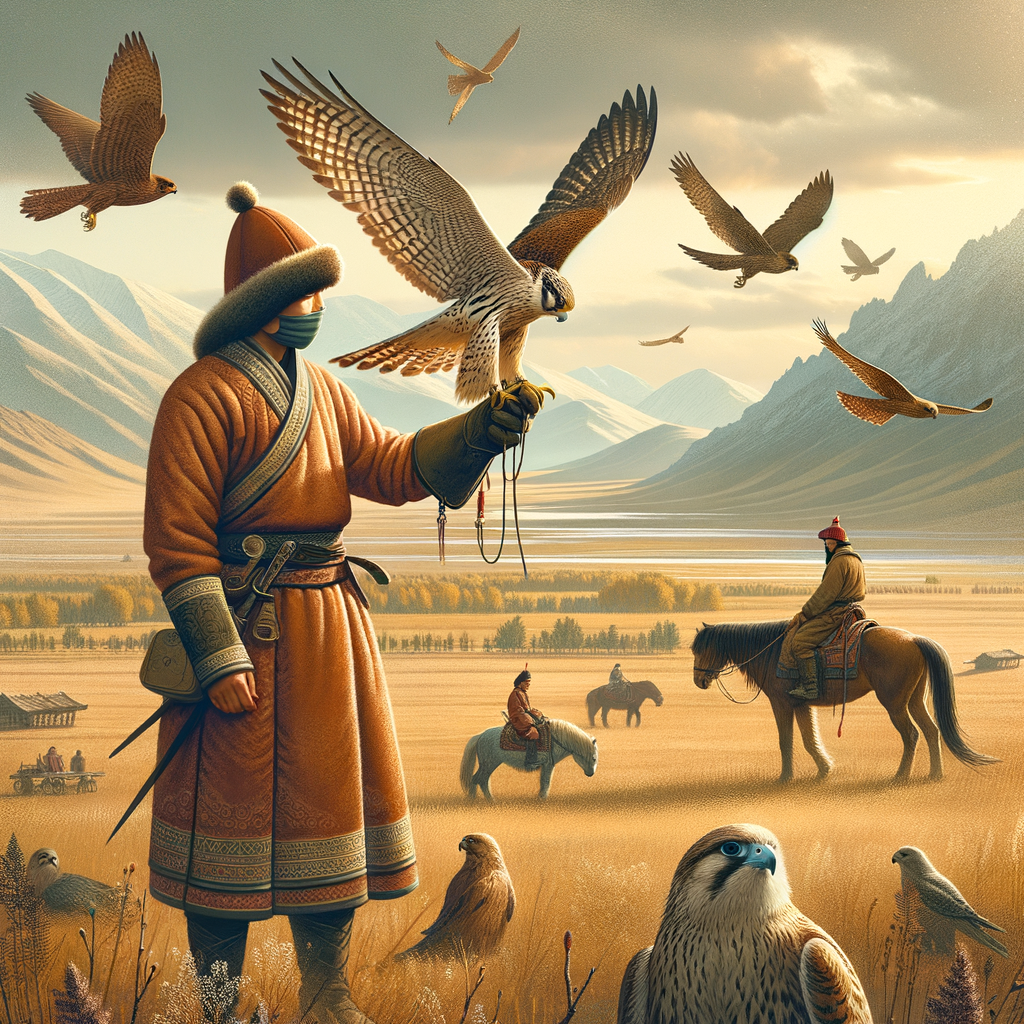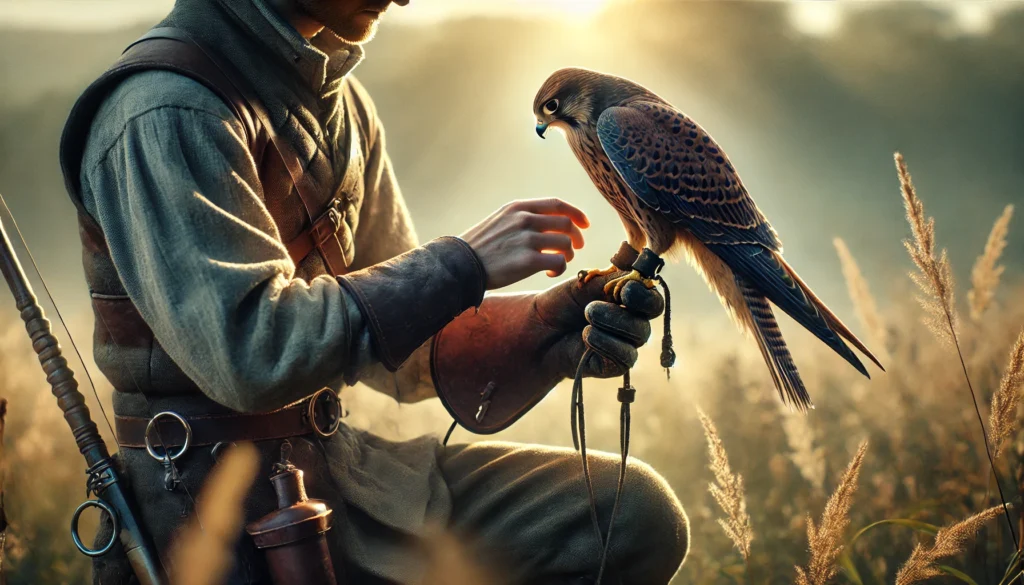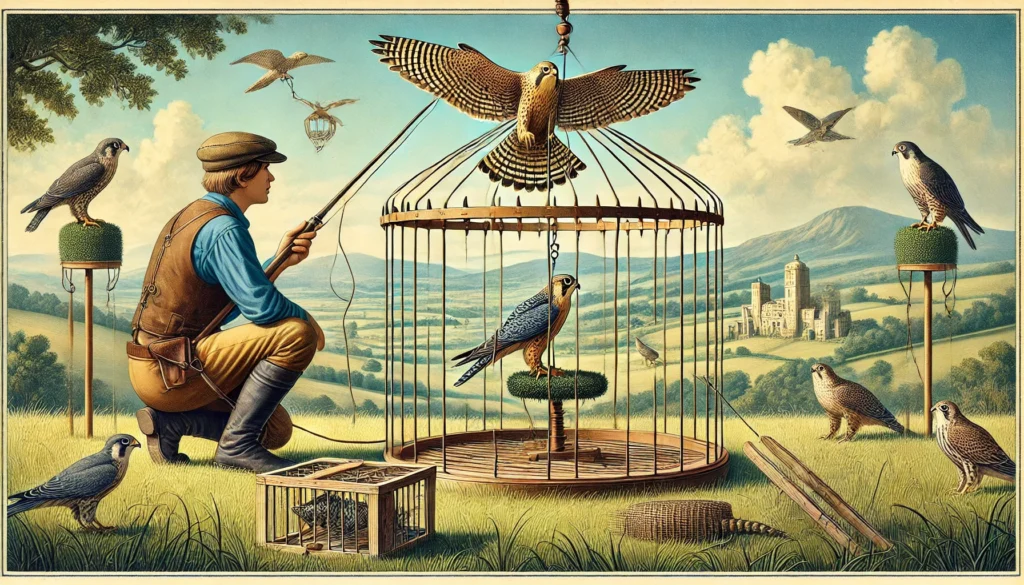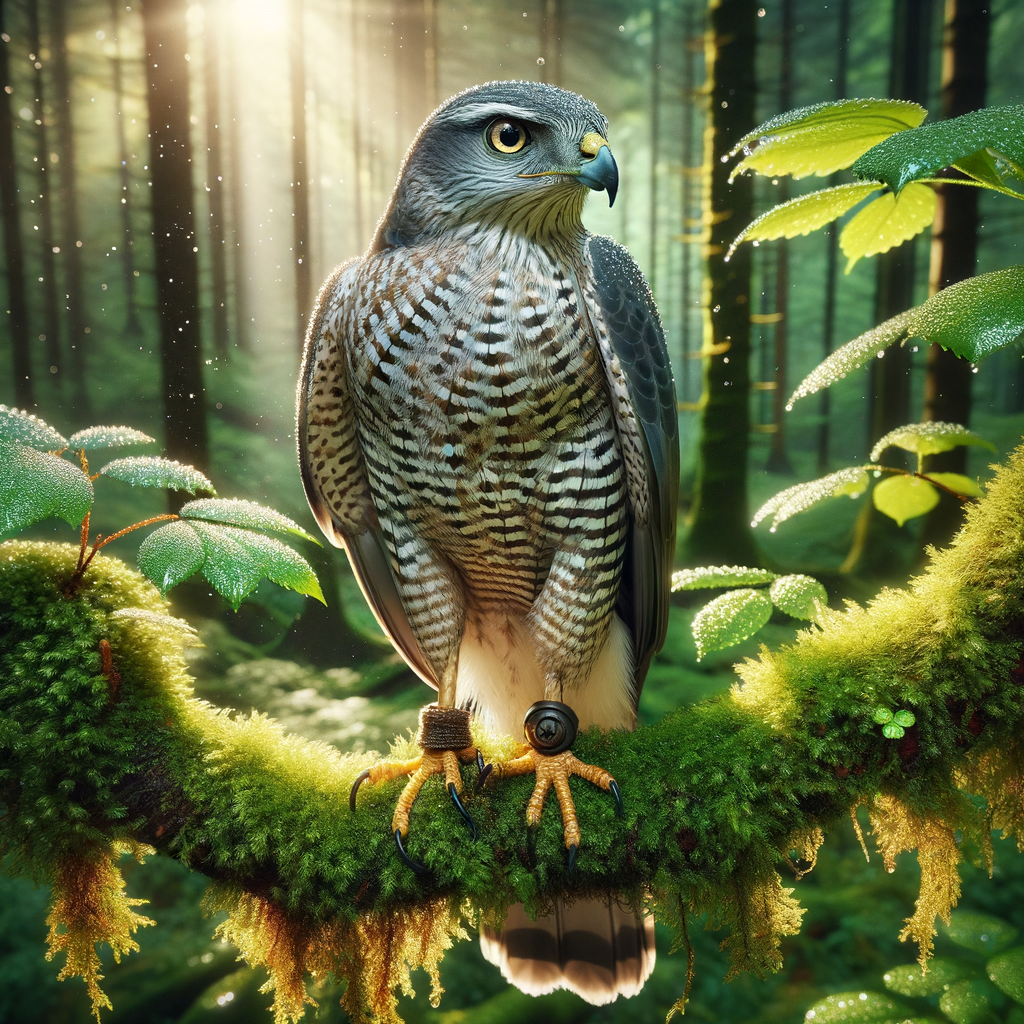Exploring Falconry in Mongolian Culture
- Falconry is an ancient practice that involves training birds of prey to hunt.
- In Mongolian culture, falconry dates back thousands of years.
- Mongolians use eagles and other birds of prey for hunting.
- This tradition is deeply connected to the nomadic lifestyle of Mongolian people.
- Hunting with birds of prey provides food and fur for clothing.
- It also strengthens the bond between the hunter and the bird.
- Falconry is passed down through generations, often taught by elders.
- Festivals and competitions celebrate the skill of falconers and their birds.
- This practice is a significant part of Mongolia’s cultural heritage.
- People around the world are fascinated by Mongolian falconry.
Discovering the Spirit of Falconry in Mongolian Culture
Imagine you’re in the heart of Ireland, surrounded by rolling green hills and misty landscapes. You see an Irish jig – rhythmic, lively, and brimming with tradition. It’s not just a dance; it’s a story that’s been passed down through generations, each step a piece of the nation’s soul. Now, swap those hills for the vast, open steppes of Mongolia and replace the dance with the ancient practice of falconry.
In this article, we will take you on a journey through the unique bond between the Mongolian people and their eagles, revealing how this timeless tradition has been carried forward and remains an integral part of their identity. Trust us, this is a story as wondrous and thrilling as an eagle’s flight, and you won’t want to miss a single moment of it. So, lace up your boots and spread your wings for an adventure across the Mongolian steppes where tradition meets wild, untamed beauty.
Exploring the Rich Heritage of Mongolian Falconry Culture
Mongolian Falconry: An Ancient Tradition
Mongolian falconry is a practice with deep roots in history. It has been a vital part of Mongolian culture for centuries, representing not only a method of hunting but also a way of life steeped in tradition and respect for nature. The Mongolian falconry practices involve a unique blend of skills, knowledge, and traditions passed down through generations.
Falconry in Mongolia: Techniques and Tools
Falconry in Mongolia requires specific techniques and equipment to train and handle falcons effectively. Traditional methods have evolved over time, but some essentials have remained unchanged. For a deeper dive into falconry equipment, you can explore perches and stands and training lures used by Mongolian falconers.
Embracing Mongolian Falconry Traditions
Mongolian falconry traditions are not just about the hunt; they also embody cultural values and social cohesion. Communities gather for festivals where falconry demonstrations highlight the bond between falconer and bird. These traditions are celebrated, preserving the heritage and passing it on to younger generations. Learn more about various cultural falconry practices.
Key Species in Mongolian Falconry
Mongolia is home to several falcon species, each playing a significant role in the practice of falconry. The Saker Falcon, in particular, is highly prized for its hunting abilities and adaptability. For more information on different falcon species, you can visit our detailed guides on Saker Falcons and other birds commonly used in Mongolian falconry.
The Role of Falconry in Mongolian Society
Falconry in Mongolia extends beyond hunting; it is intertwined with the social and cultural fabric of the community. These practices promote skills such as patience, discipline, and a profound respect for nature. Exploring falconry’s historical impact helps understand its significance in Mongolian history and beyond.
The Future of Mongolian Falconry
While traditional methods are cherished, modern innovations are slowly finding their way into Mongolian falconry. Advances like GPS trackers provide new ways to follow and study these majestic birds. This blend of tradition and technology ensures that the essence of Mongolian falconry practices continues to thrive in a rapidly changing world.
By delving into these aspects, we can appreciate the rich tapestry woven by Mongolian falconry, a practice that bridges the past and the present, connecting people with their natural heritage in remarkable ways. For newcomers interested in starting their falconry journey, check out getting started with falconry to learn more about this incredible tradition.
Falconry-Mongolian-Culture Deep Dive
Festivals and Celebrations
Golden Eagle Festival
- Dates:
- September: 17-18, 21-22
- October: 5-6, 17-18
- Location: Bayan-Ulgii Province, Western Mongolia
- Purpose:
- Raise awareness about the Kazakh hunter’s traditional culture.
- Celebrate the Golden Eagle.
- Engage younger generations and raise tourism revenue.
Activities at the festival include:
- Parade of well-dressed eagle hunters on horseback, holding eagles.
- Competitions demonstrating the bond between eagles and hunters.
- Cultural performances, traditional meals, and handicrafts showcasing Kazakh and Mongolian culture.
Eagle Hunters and Tradition
- Number of Authentic Eagle-Hunters: Approximately 150 burkitshi (eagle hunters) left in Mongolia.
- Hunting Practices:
- Female golden eagles are favored due to their larger size and longevity.
- Local Kazakh eagle-hunters train their eagles to hunt wildlife such as hares and foxes.
- Training starts when eagles are around 2 years old and spans about 10 years before releasing them back into the wild.
Training and Techniques
Training Process
- The training process for an eagle to become a skilled hunter can take up to 3-4 years.
- Hunters use stretched arms to hold the eagles during the training sessions.
Hunting Season
- The season starts in late October or early November and lasts for four months.
- Techniques involve the eagle attacking and instantly killing prey, typically by breaking its neck or spine, leaving minimal visible marks.
| Aspect | Details |
|---|---|
| Best Weather | October-November |
| Preferred Eagle Gender | Female |
| Training Duration | 3-4 Years |
| Hunting Targets | Hares, Foxes |
Conservation Efforts
- Mongolian Falconry Association Initiatives:
- “Hand To Help” project designed to prevent Saker Falcon deaths from electrocution on power lines.
- Research Organizations:
- WSCC and Nomadic Expeditions monitor aeries, collect GPS tracking data, and take blood and feather samples to study golden eagles.
Conservation of Golden Eagles
- Golden eagles are partially migratory, with some moving within Bayan-Ulgii province.
- Artificial nests have been introduced to maintain a stable population, with 5,000 nests supporting an average annual population of 602 breeding pairs.
Cultural Significance
- The tradition of eagle hunting is deeply embedded in Kazakh culture.
- Hunters consider their eagles as family members.
- Festivals and events aim to preserve and pass on these traditions to younger generations, ensuring their continuity.
Current Status and Ethical Practices
- Although the current population of Golden Eagles is not under immediate threat, habitat loss and human activities pose significant risks.
- Ethical tourism practices are encouraged to ensure the authenticity and sustainability of eagle hunting traditions.
This preservation effort was recognized by UNESCO in 2010 when falconry, including Mongolian falconry, was inscribed on the Representative List of Intangible Cultural Heritage of Humanity.
The Rich Heritage and Future of Mongolian Falconry
Falconry in Mongolia is more than just an ancient practice; it’s a living testament to the deep bond between the Kazakh people and their golden eagles. This tradition, with roots dating back to the Mongol Empire, highlights the dedication and skill of the eagle-hunters, known as “burkitshi.” These hunters spend years training their majestic birds to hunt prey successfully, a craft that demands immense patience and mutual trust.
One of the most cherished aspects of Mongolian falconry is the Golden Eagle Festival, held annually in the Bayan-Ulgii Province. This festival not only showcases the remarkable talents of the eagle-hunters but also serves as a vibrant celebration of Kazakh culture, complete with traditional costumes, parades, and cultural performances. The festivals are pivotal in raising awareness and sustaining interest in this age-old tradition, especially among younger generations.
Conservation efforts play a crucial role in ensuring the future of this practice. The Mongolian Falconry Association, along with international partners, is working tirelessly to protect the golden eagles and their habitat. Projects like “Hand To Help” focus on preventing falcon deaths and promoting responsible falconry practices.
The continued practice of falconry in Mongolia faces challenges, from environmental concerns to ethical tourism practices. However, the resilient spirit of the burkitshi and the support of cultural organizations offer hope for the enduring legacy of Mongolian falconry.
In celebrating and preserving this tradition, Mongolian falconry not only honors the past but also secures its place in the future, allowing the unique bond between human and eagle to soar for many generations to come.



